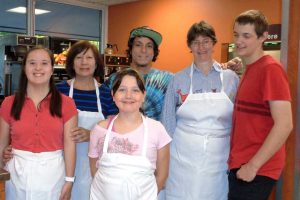Young people learn life lessons through volunteering
02 Jun 2017
Kids Pitch In!
By Ruthanne Johnson Shelby Dix is a typical 14-year-old girl. She plays softball and likes math and science. She’s learning the violin and loves to swim and hike. She and her mom have a medley of pets “and lots and lots of plants.”
‘A Broader Sense of the World’
Studies show that young people who volunteer are more likely to have better grades, attend college and achieve academic success. Colleges actually look for volunteer activities on student applications. Volunteering develops social and leadership skills and the feeling of social responsibility. It nurtures empathy and empowers kids to realize they can make a difference. “Kids who volunteer are learning new things, meeting new people and having conversations and experiences beyond home and school,” says Jane Piliavin, a professor of sociology at the University of Wisconsin-Madison who has been studying the research on the effects of volunteerism on the volunteer since the late 1990s. “It helps them gain confidence, learn new skills and develop a broader sense of the world.” Shelby’s mom has seen the benefits. “Older people are always so excited about having young people around,” says April Dix, which makes Shelby feel good about herself. “She also sees some amazing music and cultural events that as a single mom I can’t always afford.” And then there are the volunteer hours she’s building for her college applications. “Colleges like to see a minimum of 75 to 80 hours of volunteer work,” April says. “Shelby already has three times that, and will have a solid six years of volunteering by the time college rolls around.” In May, the city of Boulder gave Shelby an “Outstanding Youth Volunteer” award—another nice addition to her résumé.Learning from a Gargoyle
Longmont resident Jackson Erb, 14, is part of a volunteer youth group called the Gargoyles, who stand near trash cans during Niwot’s summertime Rock & Rails events and provide festivalgoers with recycling guidelines. He also volunteers for the Longmont Humane Society’s Feline Friends program, helping to engage and socialize cats coming up for adoption. Spending time with cats in the shelter’s colony room has taught him that cats like to spend time with humans. The quiet, he says, gives him an opportunity to escape from all the “busyness” of his life.
Lessons for Life
Piliavin suggests introducing kids to volunteering around 7 or 8 years old. “Before that, kids don’t really have the ability to put themselves in another person’s shoes,” she says. Also, make sure their schedule can accommodate the hours. “One thing I see for teenagers these days is overinvolvement in too many activities.” Service-learning courses are a great solution because they provide volunteer hours and educational credit. Social modeling can also help spark interest, Piliavin says. “Volunteering yourself or going with them for the volunteer experience can make it more appealing.” Rolison suggests finding a volunteer opportunity connected to your kid’s natural interests, which was animals for Jackson.
Ruthanne Johnson is an award-winning journalist who loves discovering unique destinations, promoting animal welfare and environmental conservation, and exploring new ways to better herself.












